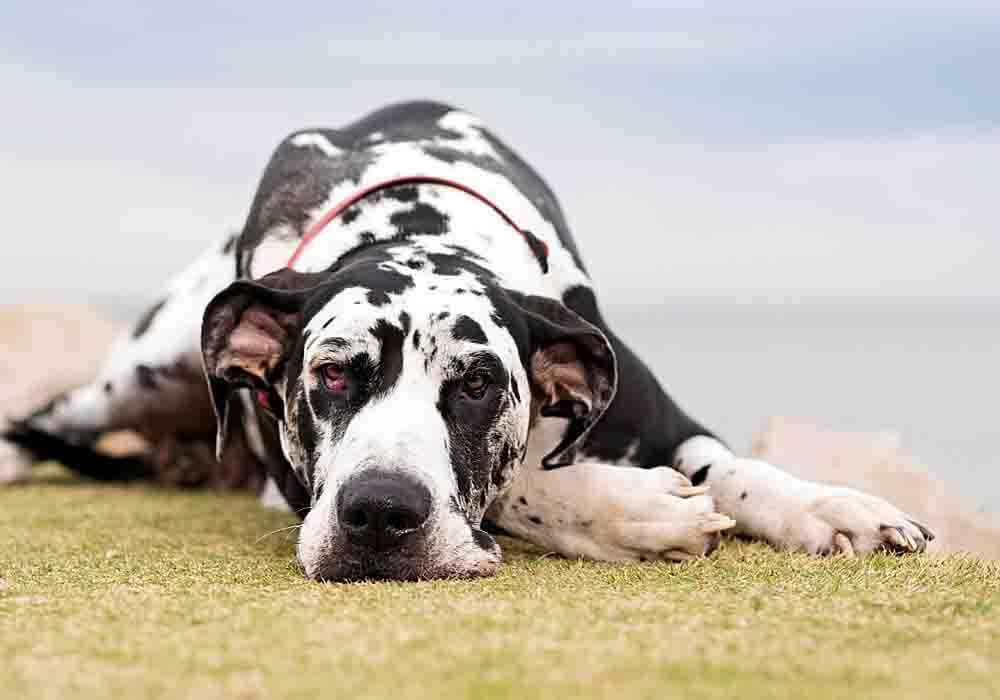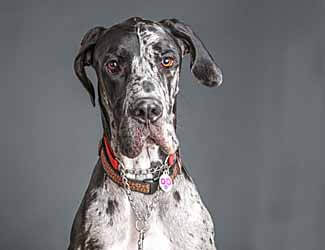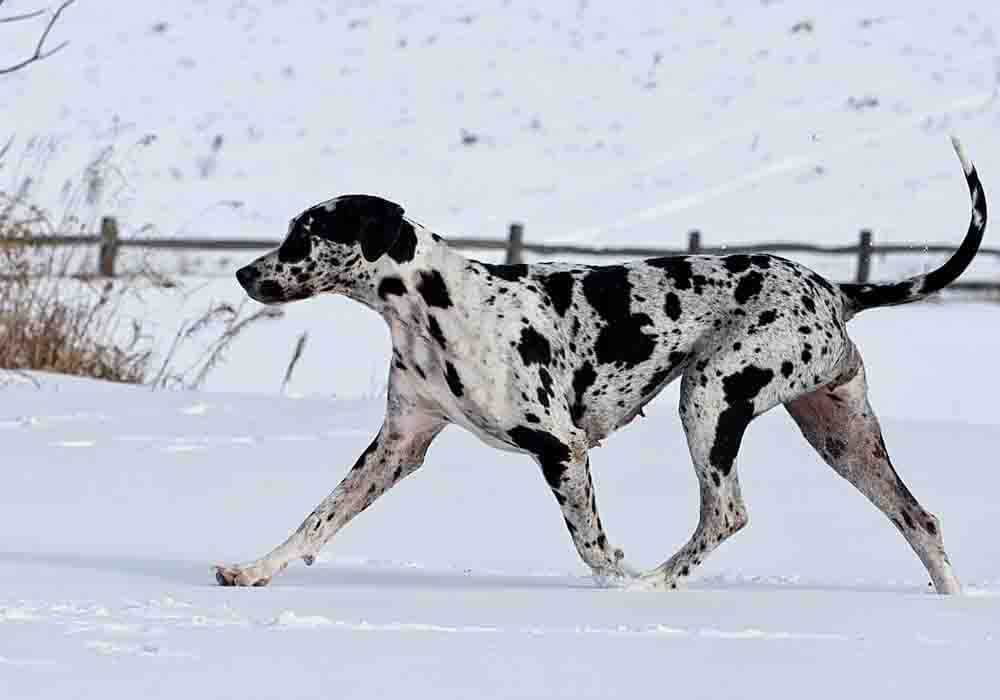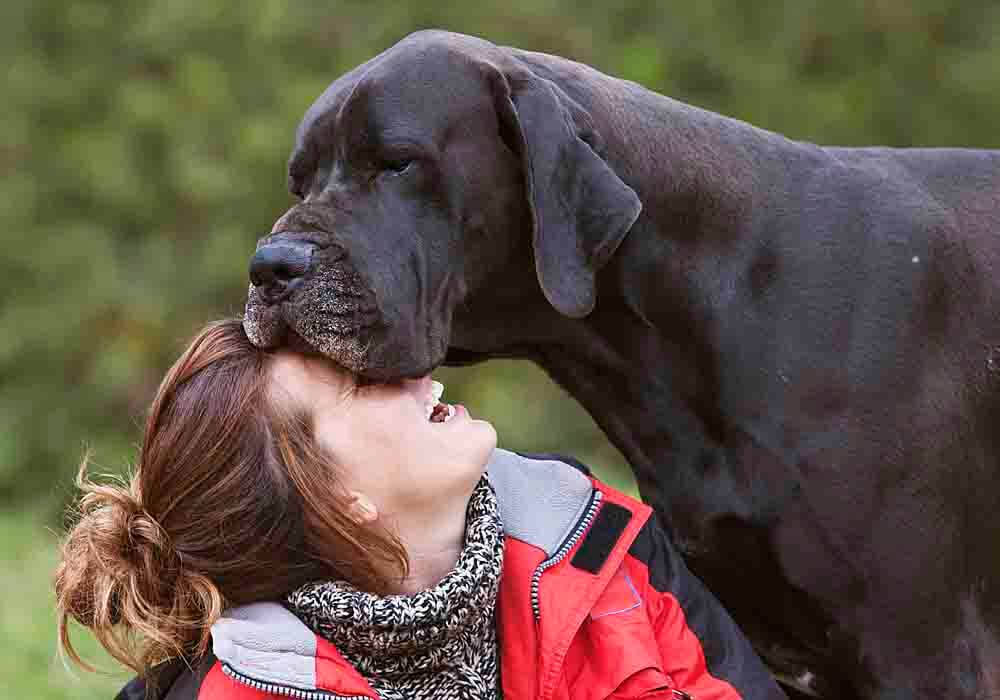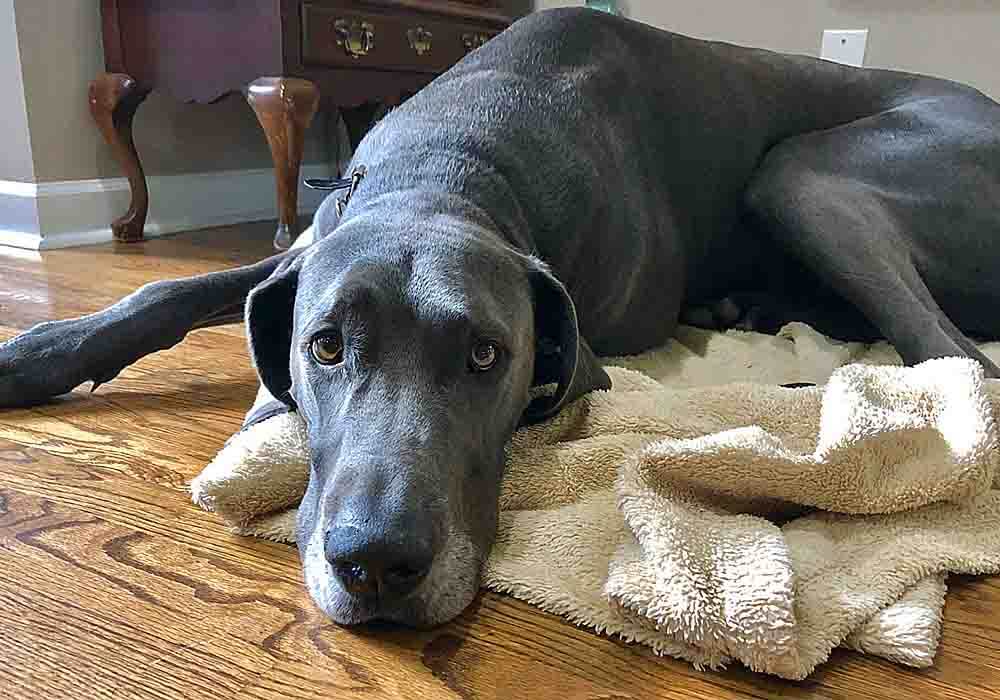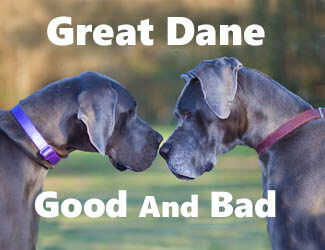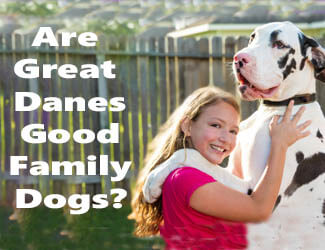Great Dane Behavior
Stages and Characteristics
by Ken Alden
So you’ve decided to get a dog, and you’ve settled on the beautiful Great Dane. Whether you’ve had different breeds before or being a first-time dog owner, you’re probably wondering what their developmental stages will look like.
Great Dane Behavior Stages And Characteristics
What Are They Like?
This breed is generally a loving, gentle dog. As a puppy, they have lots of playful energy. While they can be stubborn, Great Danes are trainable with the right treats; they are very food-motivated. These dogs need a lot of stimulation. Otherwise, they can be destructive when left alone.
Congratulations on your decision to get a Great Dane! In the following article, we will discuss further the behavior of a growing Great Dane. And if you’re still contemplating which breed to get, this guide should help you make your decision. Read More Below...
Pro-tip: Ever try lifting a Great Dane? Their weight can hurt not only your back but their joints when they hop down from cars, sofas or even your bed. To protect your back and theirs check out the best Mastiff ramps on Amazon.com now.
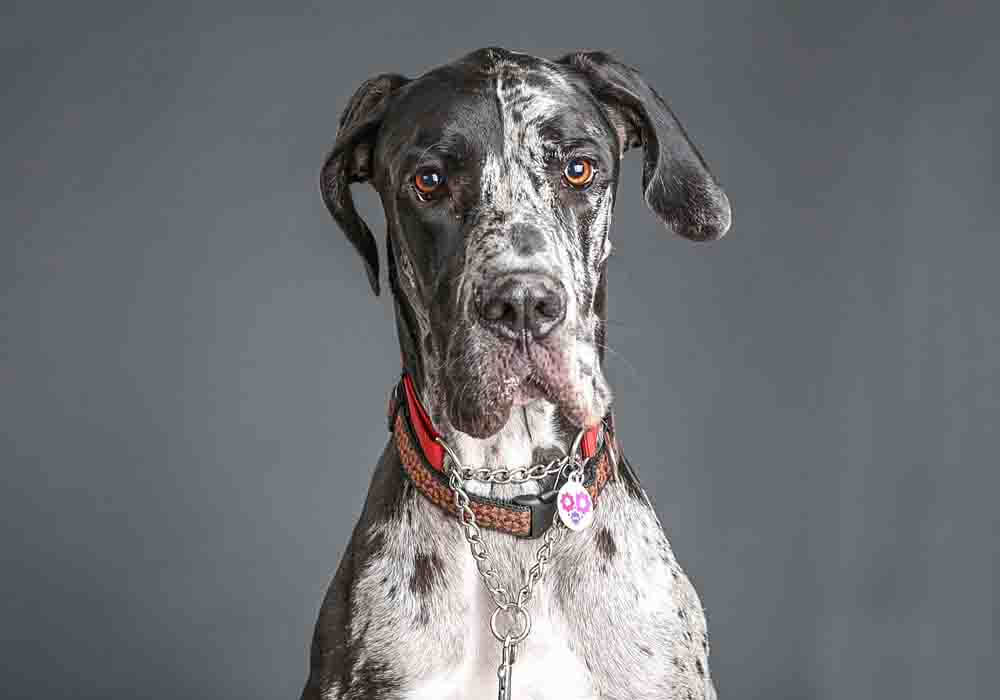
Normal Great Dane Puppy Behavior
From the day you bring your puppy home, you’ll want to start training. Very young dogs are all quite similar up until their third month of age. They eat, sleep, play, and whine. Once you hit the third month, however, the breeds can start to differ.
There are a few things that you can almost count on when getting a Great Dane. Let’s look at some of the normal puppy behavior you can expect from this breed.
Playfulness
Great Dane puppies are well known for their goofy side. These young dogs are very happy to romp around with other puppies and should be socialized early to ensure they are friendly. While rolling around in the grass with a Great Dane is a fun and healthy exercise, doing so in your living room might make for more than a few broken lamps.
Clumsiness
That brings us to the next Great Dane behavioral trait: clumsiness. These dogs are not the most graceful of beasts
even when fully grown, so they are even less so as pups. Their long limbs,
floppy ears, and whip-like tails make for a lot of body parts to keep control
of, and the dogs aren’t particularly good at it.
Pro-tip: Great Dane anxiety, aggression, destructive chewing, jumping up, fearfulness, and other behaviors can be controlled with the right training program.
Here’s a great course that
addresses these issues along with many other dog training basics: Check it out now!
Healthy Appetite
You may find yourself in awe every time you watch your new pup scarf down a meal. These dogs are fast eaters, highly food motivated. Because of their size, they have been known to steal entire meals off of dinner tables when the humans aren’t looking.
3-4-5 Month-Old Great Dane Behavior
As your Great Dane gets older, they will start to develop their independent characteristics. By month three, you’ll see some of their personality start to become concrete. This is a very important time in your pup’s life, as any prospective issues should be identified and dealt with.
Your Great Dane will be very
playful during this time. You
should engage in lots of play and fun, rewarding training with your dog. Make
sure to keep walks short but often, as their bodies are still growing, and they
cannot handle long walks or high-impact exercise. great dane behavior stages and characteristics
Take your young pup to as many places as possible. Introduce
them to different scenarios and people so that they become confident and
friendly dogs. Also, be sure to leave them at home for periods of time, as
Great Danes are prone to developing separation anxiety.
6-7-8 Month-Old Great Dane Behavior
Now your dog is a little bigger and a little stronger. It’s important to continue with consistent training at this time so that your dog remains easy to control as they get bigger. Continue to leave your dog at home alone, so that this becomes a normal, and not scary, thing.
Watch for any signs of aggression in this period. Great Danes can be severely protective of their families (it’s in their genes), and you may want to hire a trainer if you see any aggressive traits. A 6-7-8 month-old Great Dane is still very playful, though, and would enjoy many visits to the dog park.
9-10 Month-Old Great Dane Behavior
From here to a year and a half, your dog will be in their teenage faze. A lot of Great Danes pretend that they have forgotten all of their training at this stage. Be patient, and continue to reward your dog for good behavior. They will grow out of the stubborn attitude in time, and the work you’ve put in to create a well-behaved dog will pay off.
Great Dane Puppy Behavior Problems
There is one major issue that people often encounter with their Great Dane puppies. Because they are such a large breed, these dogs are supposed to take part in gentle play. They cannot go on big hikes or roughhouses too much. Unfortunately, this makes for a bored dog, and a bored dog is a destructive dog.
Great Danes are often destructive puppies. To counteract this,
you must engage in mentally stimulating games and training.
Pro-tip: Great Dane's (and their owners) love dog crates…and for good reasons. Crates keep dogs from mischief while you're away, are perfect for house training, for traveling by car, and provide the dog a place to de-stress. Check out the best Mastiff crates on Amazon.com now.
Great Dane Adolescent Behavior
In the adolescent stage, these dogs can often develop separation anxiety. Great Danes become extremely attached to the people around them, and if they aren’t left alone regularly, they can become anxious when they finally are.
To solve this issue, you must start leaving
your dog alone for short periods of time when they are young. Leave the
television or radio on for your dog, so they do not feel alone. Giving the dog
an old sweater that smells like you can help, too. When you do come home, don’t
make a big deal over your Dane.
Simply go about your business for a few minutes, and then pet your dog. This
makes the departure and arrival process less energetic.
Older Great Dane Behavior
Even if your dog is one year old, that doesn’t mean he’s no longer a puppy. It takes Great Danes up to 18 months to fully mature physically and mentally. When they do, they are mostly loving, affectionate dogs that are very good with children. Most Danes are patient and do well with both young children and older teens.
Great Danes will maintain a playfulness and healthy appetite
throughout their adult life. They will continue to prefer to be with you than
to be alone.
Great Dane Behavior Issues
Some potential behavioral issues with this breed are aggression, destructive chewing, and pulling on a leash.
Destructive chewing can be an issue for a lot of Dane owners. The best way to combat this is to redirect your pup to chew toys and treats that are okay for them to chew. Kongs filled with your dog’s food make for long-lasting entertainment, especially when frozen.
Having any dog that pulls on leash is annoying; having a Great
Dane that pulls on leash is dangerous. It’s important to teach your puppy
proper leash-walking behavior so that as an adult, they are well-behaved. While
training is important for all dogs, it’s even more crucial when your dog will
potentially outweigh you.
Great Dane Behavior Stages And Characteristics...Summary
Great
Danes are often referred to as the “gentle giants” of the dog world, and the
breed is known and loved for their patience, companionship, and nobility. This
giant breed is a great option for people with a large yard and young children.
However, keep in mind that the lifespan of a Dane is only 6-8 years, so a smaller breed might
be a better option for sensitive children.
Return to the top of this Great Dane Behavior Stages And Characteristics page

About the Author...
Ken Alden, a dedicated Mastiff owner for over eight years, is acclaimed for his expertise in care, grooming, and training. Read more About Me and my dog Shadow.
- Mastiff Guide Home ›
- Great Danes ›
- Great Dane Behavior Stages And Characteristics
